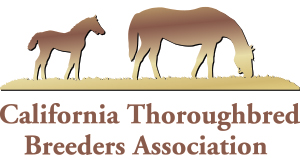By Bloodhorse.com
CYPRESS, Calif. (Dec. 17, 2015) — Licenses for meets that begin Dec. 26 at Santa Anita Park and Golden Gate Fields were approved Dec. 17 by the California Horse Racing Board, but not before another lengthy discussion of ongoing issues regarding stabling and vanning among tracks and training facilities.
Both tracks are owned and operated by The Stronach Group, which was represented at the meeting by Scott Daruty, president of the company’s Monarch Content Management, and Joe Morris, senior vice president of West Coast operations. They both outlined the parameters of a deal on stabling and vanning but noted future arrangements hinge on legislative action.
Under an agreement signed by The Stronach Group and the California Association of Racing Fairs, Pleasanton will remain open for stabling and training during the Golden Gate meet, which runs through June 12, 2016. Golden Gate will then remain open for stabling and training while the Northern California fairs are in operation.
Daruty said The Stronach Group and CARF continue to work with the Thoroughbred Owners of California to achieve a three-party deal. It was noted at the meeting, however, that agreement by only two parties is needed to meet licensing requirements.
“I believe we have a deal, we just don’t have it on paper yet,” Daruty said.
The period of October through December of next year remains a gray area. Daruty said Golden Gate is considering adding stalls to accommodate horses that otherwise would be stabled at Pleasanton, which only holds a summer fair meet. Morris said the idea is to consolidate the horse population at Golden Gate for most of the year to create cost efficiencies.
If Pleasanton is closed for stabling, purses would get an additional $100,000 and Golden Gate $100,000 per month. The challenge, Morris said, is accurately assessing the horse population and then making the necessary decisions.
Morris said of the 300 or so horses stabled at Pleasanton, 53% haven’t raced in the last 90 days. There are, however, some yearlings, Quarter Horses, and other breeds of horses on the grounds. At Golden Gate, 22% of the horses haven’t raced in 90 days, Morris said.
At Pleasanton, the cost to the industry is about $1,400 per horse per month, Morris said. Stabling and vanning is paid for through a percentage of pari-mutuel handle in California.
“We need to better manage our horse inventory,” Morris said. “But I believe we can get to having one facility open for maybe eight months a year. We don’t want to stay open at a loss.”
Officials said the day rate for periods when there is no live racing will increase in 2016.
CHRB member Madeline Auerbach said tracking horse inventory has been an issue for years. She said the microchipping of horses in 2016 should be of great assistance.
“We’ve always had more horses at tracks that do not belong there for a long time,” Auerbach said.
TOC representative Greg Avioli noted another issue regarding stabling and vanning costs in Northern California. He said the horsemen’s group is responsible for 50% of the costs but in the three-party system has only 33% of the vote.
Avioli said proposed legislation would increase the contribution to the stabling and vanning fund from 1.25% to 2%. If the bill doesn’t pass during the 2016 legislative session, there could be a $500,000 deficit, he said.
In other business, the CHRB discussed daily fantasy sports and how the racing industry can introduce those players to horse racing. Avioli said two bills have been offered in California that would license and regulate fantasy sports, but he noted if the state attorney general doesn’t act and a bill passes, fantasy sports would in effect be legalized.
“We should not let that happen lightly,” Avioli said.
It was said during the meeting that pro sports teams in California claim daily fantasy sports has been a positive in developing interest, but it was noted by CHRB members that inviting those players to horse racing could be difficult given the average takeout rate for pari-mutuel betting is about twice that of fantasy sports contests.


